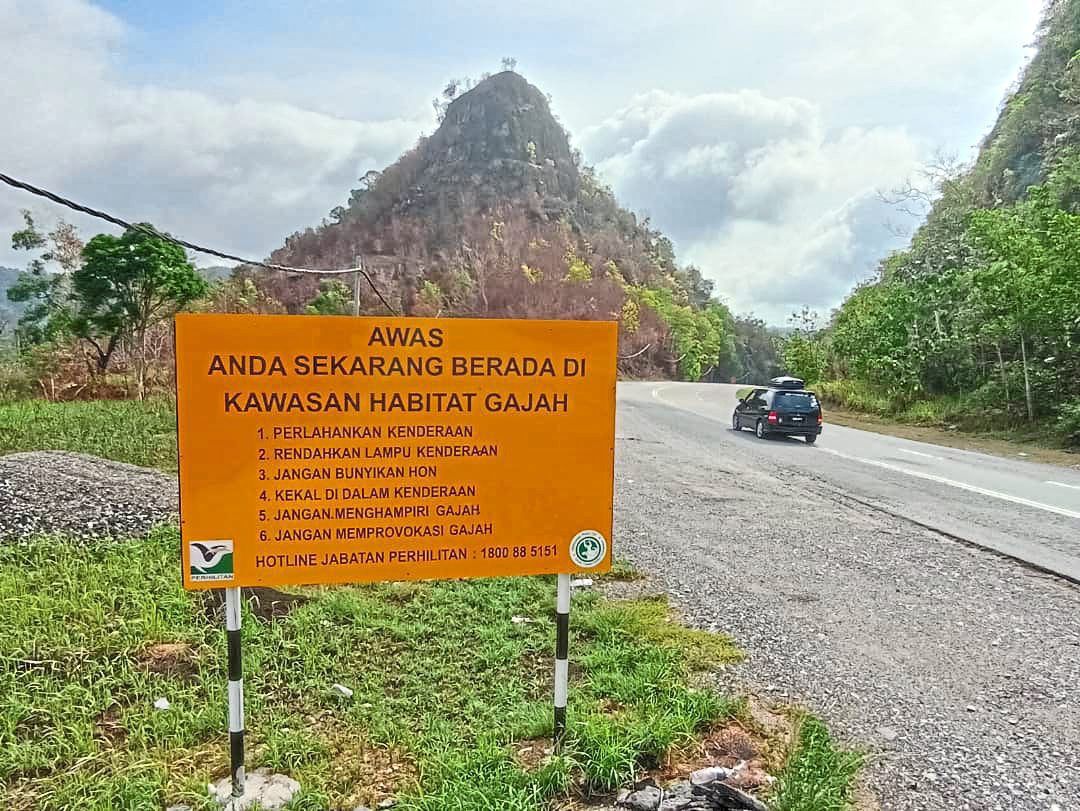SINCE 2020, it was reported that a whopping 2,361 wild animals have met their unfortunate fate on the roads of our nation.
Pahang leads the sad tally with 765 deaths, followed closely by Perak at 478, and then Kelantan with 224, Terengganu at 201, and Negri Sembilan at 187.
It seems that this grim figure stretches even to our gentle giants, with eight elephants falling victim in 2020, two each in 2021 and 2024, and three more this year. Can you believe it? Even a tiny baby elephant joined the statistics just last Sunday!
And let’s not forget the Malayan Tigers; they had a quiet couple of years, but they’ve recently started to make headlines again, with one reported death in 2023, three in 2024, and one so far this year, according to our Natural Resources and Environmental Sustainability Minister Nik Nazmi Nik Ahmad.
What a sobering situation we find ourselves in! A recent press statement implies that the Malaysian government is, at the very least, aware of this alarming trend.
They’re keeping track of the rising wild animal death toll, particularly where endangered species like elephants and tigers are concerned.

It speaks volumes that our minister was brave enough to share these rather chilling statistics, indicating that the government is organising data about these unfortunate wildlife-vehicle collisions.
Now comes the serious part—this issue is indeed deeply concerning, and it’s clear the government is starting to recognise it. They highlight the tragic losses of elephants and tigers, which shows they realise roadkill poses a real threat to our precious wildlife.
However, as is often the case in these matters, there seems to be a bit of a gap between recognition and action. While the declaration reveals rising animal deaths, especially in recent times, it falls short of specifying what steps the government is going to take to tackle this problem.
There is no mention of wildlife crossings, improved road signs, or speed control zones near wildlife habitats. One can’t help but think perhaps a little more focus on prevention is in order.
The government has pinpointed certain states as hotspots for these distressing incidents, which suggests there’s potential for targeted efforts if they devise suitable policies or infrastructure improvements.
But alas, knowing about a problem doesn’t quite solve it, does it? The Malaysian public, I suspect, is left desiring more than just statistics—it craves action!
Suggested counter-measures
So, what can be done? First, we need to construct some wildlife crossing infrastructure. Picture eco-viaducts and underpasses, especially in places like Pahang, Perak, and Kelantan! With a bit of forethought, we could help our fellow creatures cross with ease and grace.
Let’s not forget the importance of walls, too—roadside fencing to steer animals towards safe crossing spots is a must, especially given the increased encroachment on their ecosystems. It may be clever to modify existing structures to serve as underpasses for wildlife where possible.
Now, while the government shows bravery in disclosing death statistics, one may notice a lack of data-driven planning for roads. A good start would be employing GIS and AI to map out the hotspots for animal crossings.
Current data can lead the way, and it wouldn’t hurt to have more camera traps and sensors installed—especially those motion-detecting cameras that send alerts to drivers when large animals decide to wander too close to the blacktop.
We need legislation and stricter policy enforcement to protect critical wildlife zones. That means we must legally designate certain corridors with stringent speed limits and traffic controls.

And let’s not overlook the importance of mandatory environmental impact assessments before blessing new roads that intrude upon their forests.
Community education is equally vital as well! The government, too, should run continual awareness campaigns about wildlife crossings, especially in those known hotspots. Engaging local communities in monitoring and reporting wildlife incidents would be a splendid idea!
And wait! We should establish a joint task force comprising the Department of Wildlife and National Parks (PERHILITAN), the Public Works Department (JKR), highway concessionaires, and NGOs. They could coordinate their efforts well and address the challenges we face.
Moreover, let’s have rapid response units ready to jump in whenever wildlife-vehicle collisions occur. They could assist injured animals and ensure that drivers are held accountable for their negligence.
One can’t help but wonder if Malaysia has long-term strategies in place for wildlife conservation.
Reconnecting fragmented forests through reforestation and reserved corridors—with careful planning to favour wildlife movement—would indeed be a worthy venture. The annual development budget should reflect the necessary funding for this initiative.
Partnering with the private sector, such as toll road companies, and seeking international conservation grants would also be beneficial.
If the government genuinely executes these suggestions without taking shortcuts, we might see a significant reduction in the deaths of endangered species like elephants and Malayan tigers.
It would undoubtedly enhance the global image of Malaysia as a nation that genuinely cares for its biodiversity—not just in speeches, but in action too. – May 14, 2025
KT Maran is a Focus Malaysia viewer.
The views expressed are solely of the author and do not necessarily reflect those of Focus Malaysia.
Main image: The Star









